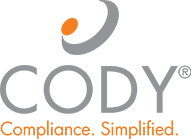3 Ways your Health Plan is Overspending – And How to Stop
Health plans today are feeling more pressure than ever before to do more with less. With increased scrutiny from The Centers for Medicare and Medicaid Services (CMS) and decreased budgets, leadership is constantly looking for ways to save money. Doing so might be easier than you think.
Below are three ways that health plans are overspending, and how they can stop:
1. Unnecessary FTEs
For health plans looking to bring on more resources to handle growth, the obvious course of action may be to hire more full-time equivalent employees (FTEs). However, adding FTEs comes with great expense, such as salaries, benefits, workstations, equipment and other expenditures.
Instead, health plans should consider solutions to help automate and streamline tasks that will eliminate the need for additional FTEs and keep the plan running smoothly in the long-term. The right software programs can do the job of multiple FTEs, at a fraction of the cost. Tools that streamline a plan’s policies and procedures, HPMS Memos, investigations and collateral material development are particularly helpful and can increase efficiency and productivity and reduce overall compliance risk.
In instances where technology can’t replace a person, outsourcing tasks or functions to an industry expert may also be a good alternative to hiring more FTEs.
2. Printing, mailing and postage costs
Printing and mailing marketing and enrollment materials such as Annual Notice of Changes (ANOCs), Evidence of Coverage (EOCs) and Summary of Benefits (SBs) cost health plans thousands of dollars each year. Yet, many are spending more than needed to distribute these documents.
There are several areas where health plans can save money when distributing these documents. First, combining certain materials into one document rather than producing multiple versions will save on printing costs, as well as postage since packages will be smaller. Mailing documents well in advance of the Sept. 30 deadline will also save money on postage, as the plan can send materials via Standard Mail rather than the more expensive First-Class, Priority Mail or Priority-Express Mail.
If you’re unsure how to leverage these cost savings, consider partnering with an industry expert who can oversee these documents from creation to print and fulfillment.
3. Unnecessary Civil Money Penalties (CMPs) and errata mailings
Errors in ANOC and EOC documents can cost health plans thousands of dollars in civil money penalties (CMPs) from CMS. On top of that, health plans must also absorb the cost of creating copy, printing and sending all affected enrollees errata mailings with the correct information.
Health plans can avoid these costs by completing these documents on time and in compliance the first time around. For health plans that are nervous about sending out inaccurate documents, there are a number of ways to improve the process. First, using a system like CodySoft®’s Collateral Management Module® can help streamline development of member marketing materials, reducing the risks of errors and ensuring they are distributed on time. Having your documents reviewed by a team of experts can also help identify errors before they are flagged by CMS.
Lastly, outsourcing the creation of your ANOC and EOC documents can free up internal resources and greatly reduce the risk of non-compliance.
Is your health plan looking for ways to save money? Cody can help. Our consulting services and technology solutions have helped health plans across the nation to save thousands of dollars in unnecessary costs. Contact us today to find out how we can help you.
